Back
BLUE UNDERGLAZE
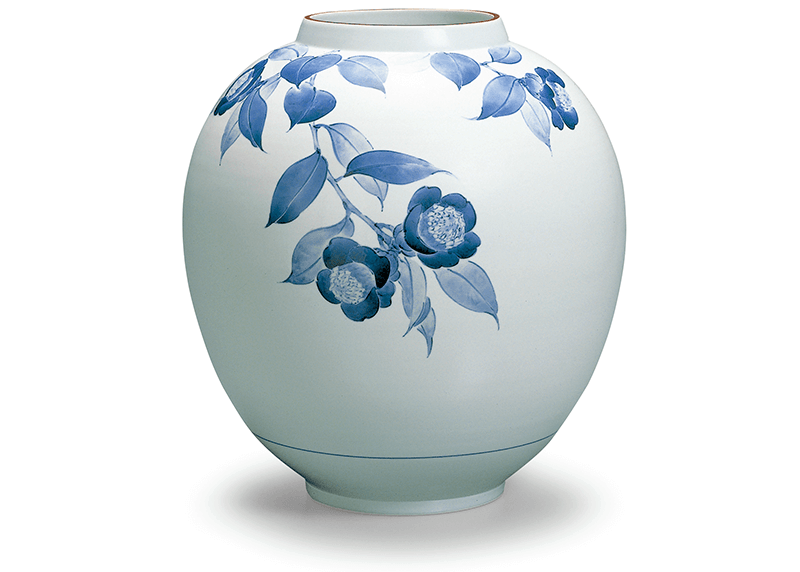
Description
Blue and white porcelain (sometsuke) is made by painting blue underglaze decorations on white bisque-fired pottery using a cobalt-rich pigment known as zaffer (gosu). The piece is then coated with a transparent glaze and fired. This technique for making blue and white porcelain has been used in China since around the twelfth century during the Yuan Dynasty.
Although zaffer is black or brown before firing, the pigment turns into a beautiful indigo blue when fired. The subtle differences in color resulting from the artist’s brushstrokes and variations in pigment thickness are central to the appeal of blue and white porcelain.
Process
-
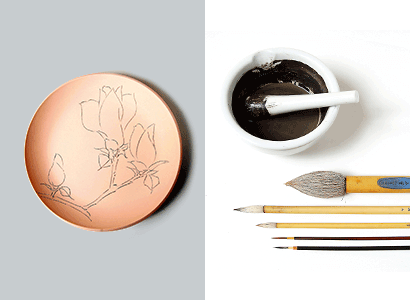 1.A rough sketch is drawn on the piece with a pencil.
1.A rough sketch is drawn on the piece with a pencil. -
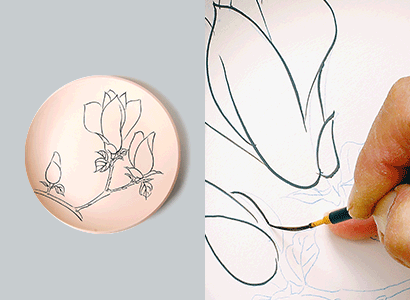 2.The outlines of the design are painted with a fine brush.
2.The outlines of the design are painted with a fine brush. -
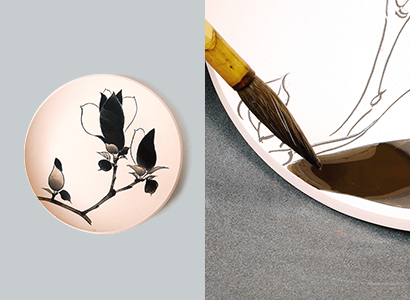 3.The outlines are filled in, varying the thickness of the pigment.
3.The outlines are filled in, varying the thickness of the pigment. -
 4.The piece is coated with a glaze that turns transparent when fired.
4.The piece is coated with a glaze that turns transparent when fired. -
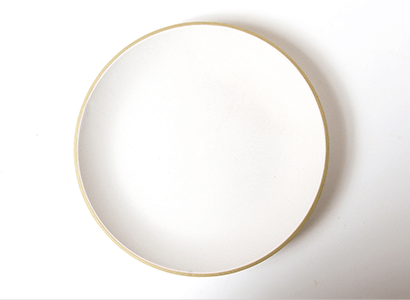 5.Before the firing, the glazed pottery appears completely white.
5.Before the firing, the glazed pottery appears completely white. -
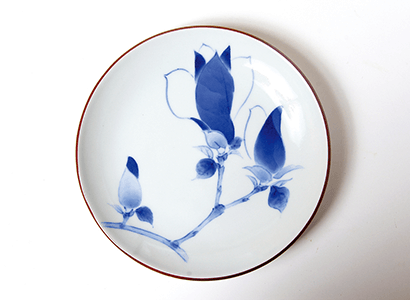 6.After firing, the areas underpainted with zaffer turn indigo blue.
6.After firing, the areas underpainted with zaffer turn indigo blue.
-
Reference: Nihon Kōgeikai Higashi Nihon Shibu (Japan Kōgei Association Eastern Branch), ed., Dentō kōgei-tte nani? – miru, shiru, tanoshimu gaido bukku (What Are Traditional Crafts? –A Guidebook to Seeing, Learning, and Enjoying). Unsodo, 2013.
